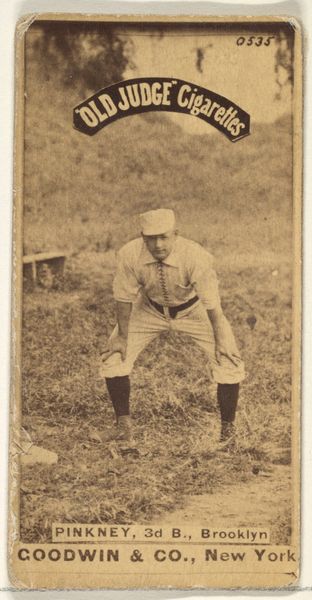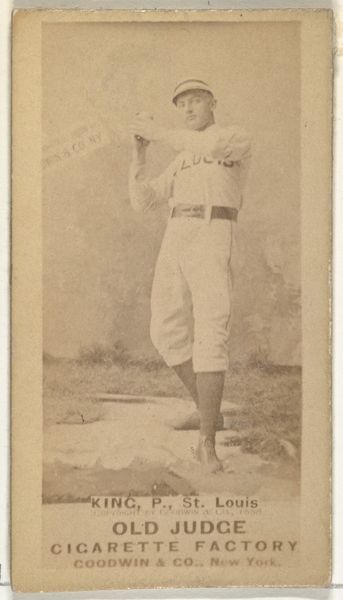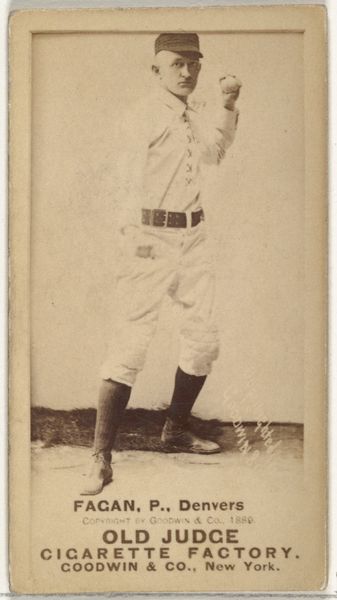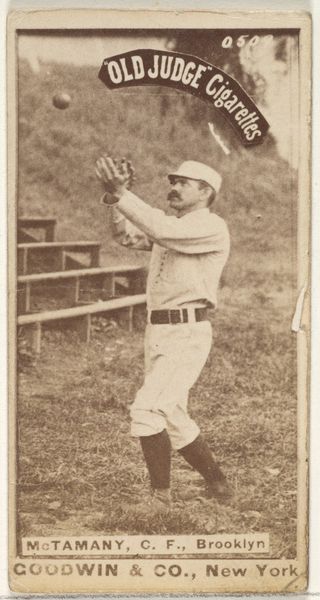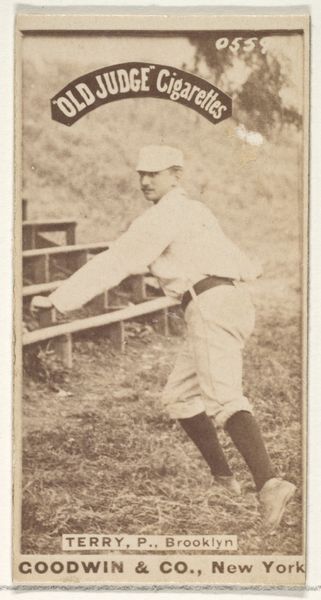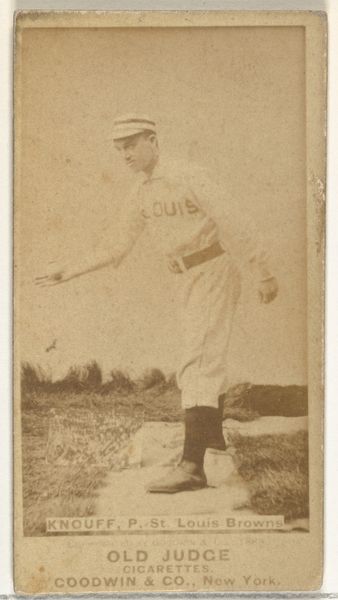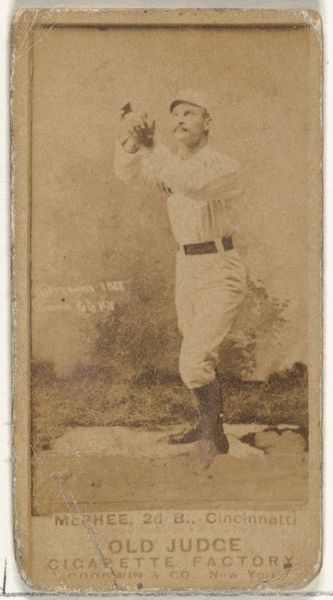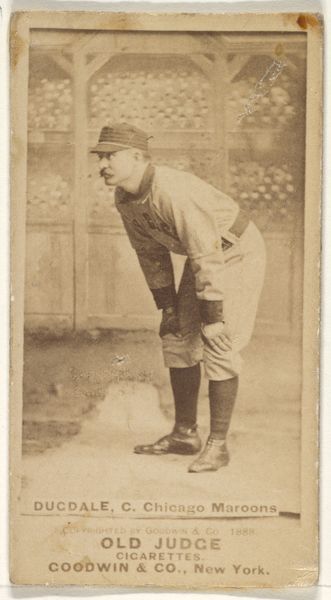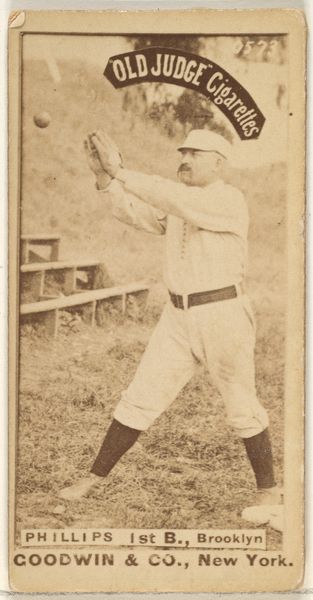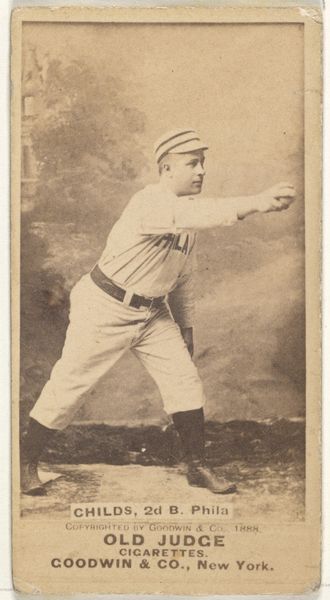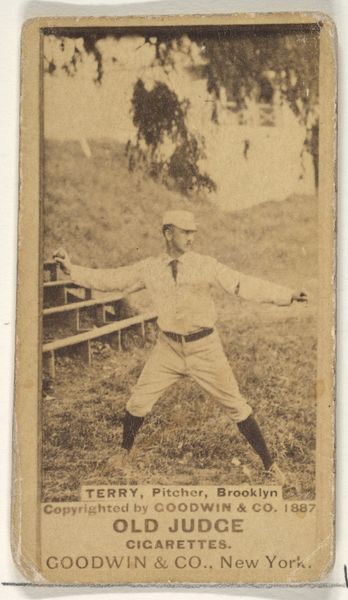
Greer, Catcher, Brooklyn, from the Old Judge series (N172) for Old Judge Cigarettes 1887 - 1890
0:00
0:00
print, photography
#
portrait
#
pictorialism
# print
#
baseball
#
photography
#
genre-painting
Dimensions: sheet: 2 11/16 x 1 3/8 in. (6.9 x 3.5 cm)
Copyright: Public Domain
Editor: This is “Greer, Catcher, Brooklyn,” a print from around 1887-1890 by Goodwin & Company. It’s an advertisement for Old Judge Cigarettes, featuring a baseball player. I’m struck by how posed and still it feels for a sporting image. What stands out to you in this piece? Curator: What immediately grabs me is the interplay of industry and leisure. Consider the symbol of the cigarette, linked to emerging mass production and a nascent advertising culture. Then juxtapose that with baseball, a sport embodying American ideals of teamwork and healthy competition. See how those symbols interact. What emotional response do you get? Editor: Well, it feels a bit strange to see them connected now, knowing the health risks of smoking. The baseball player looks like an idealized figure, almost like a classical statue. Curator: Precisely. It borrows visual language to ennoble the baseball player, but the cigarette brand creates a visual paradox. It suggests a conflation of athletic prowess with addictive habits. The “Old Judge” moniker itself implies a paternal, authoritative voice lending credibility to the product. Note how they use semiotics, right? Editor: Semiotics? As in, using signs to communicate ideas? Curator: Exactly. The image operates as a complex network of signs, designed to equate smoking with desirable qualities: athleticism, success, even judgment. It tells us a great deal about the values being constructed and promoted during that era. Editor: That's fascinating! I hadn’t considered how much the image is saying about the culture beyond just advertising cigarettes or promoting baseball. I guess images, like words, can hide messages that you only start to see once someone points them out. Curator: Indeed, it’s a constant dialogue between the image and its context. Cultural memory is powerful, wouldn't you agree?
Comments
No comments
Be the first to comment and join the conversation on the ultimate creative platform.
